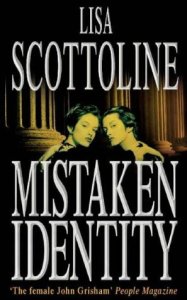Mistaken identity is one of the leading causes of wrongful conviction. Mistaken identity is a criminal defense that is raised by a defendant that asserts that a witness, usually an eyewitness, is mistaken in his or her memory that the defendant is the perpetrator of a crime. While the witness may claim to have seen or heard the accused commit the crime, the witness is actually mistaken and the defendant is not the individual that perpetrated the crime.
The witness is not lying. He or she strongly believes that the defendant is the criminal. However, eyewitness identification of a perpetrator is often unreliable because people’s memories of events and people change and fade over time. The witness’s “positive” identification of the defendant might, in reality, be a mistake because the defendant looks or sounds like the criminal, but in fact is not.
One Car Accident, But Many Variations Of What Happened
Memory is a tricky thing. Take, for example, a car accident, where numerous bystanders witnessed the whole event. When police show up on the scene and start taking witnesses’ statements, there is a noticeable divergence of the details between the stories that they collect. This is because the human brain can’t possibly remember every detail of a traumatic or exciting event. So after the event is over, the brain tries to remember what happened, but can’t recall every detail. To make up for this lack of information, the brain tries to fills in the missing details. Sometimes these missing details are derived from old memories, or are derived from memories from the scene of the accident, but the details are swapped. For instance one car was green, the other was blue, but one witness might misremember which vehicle was blue and which was green.
Factors That Can Impact Memory
There are many factors that play into how well a witness can remember the details of an event or the features of a person’s face. A few examples include:
- Environmental factors. Weather conditions, poor lighting, distance between the witness and the perpetrator of the crime, or unfamiliar surroundings will all affect how well an individual remembers an event or criminal.
- Race-based facial feature similarities. Race can sometimes be a factor, particularly when it comes to remember facial features. When the witness and the perpetrator are of the same race, there is a higher rate of accuracy in identifying the perpetrator, whereas when the witness and the perpetrator are of different races, there is a higher likelihood of misidentification. Presumably, when the two are of the same race, the witness can more easily remember details of a perpetrator’s face because they each share similar, or familiar, facial features.
- Emotions. The amount of stress that the witness is under when he or she witnesses the crime can impact identification. Extreme stress or fear can trigger very strong emotions, which can affect memory. Some witnesses faced with violence or who are threatened with a weapon very distinctly, clearly and accurately remember details of the perpetrator. Other times, these extreme emotions cause the witness’s accounts to be highly inaccurate.
- Police action. Police protocol can improperly influence, or bias, how a witness remembers the criminal. For instance, the specific instructions given by police, or the presentation of the perpetrator for identification (a lineup, a photo array, etc.) can impact the witness’s memory and thus identification.
 Massachusetts Criminal Defense Attorney Blog
Massachusetts Criminal Defense Attorney Blog


